Garlic Parmesan Potato Wedges Crispy and Flavorful Treat
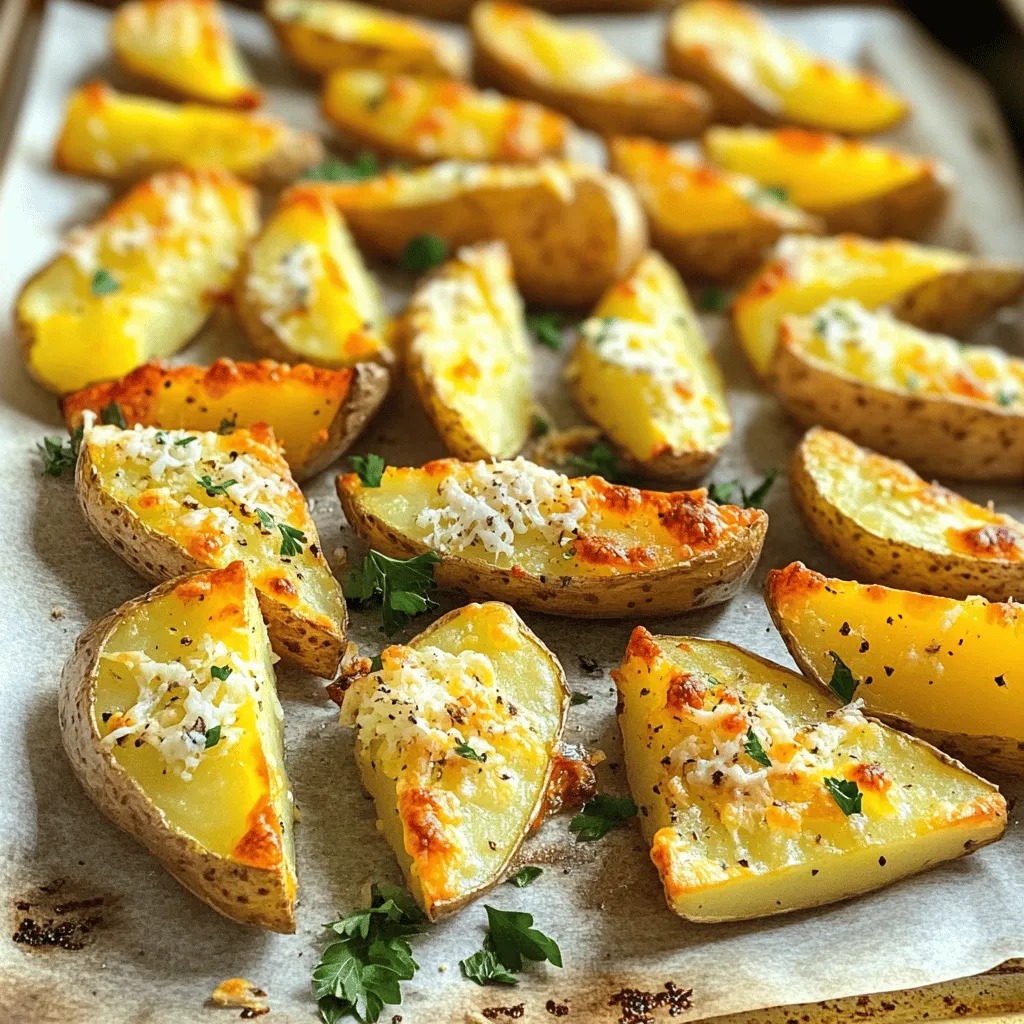
If you’re looking for a tasty side dish that’s simple to make, you’ve found it! My Garlic Parmesan Potato Wedges are crispy, flavorful, and perfect for any meal. With just a handful of ingredients, you can whip up this delicious treat that everyone will love. I invite you to explore the mouthwatering details and step-by-step instructions in this guide. Let’s get started on making your new favorite potato wedges!
Ingredients
List of Ingredients
- 4 large russet potatoes
- 4 tablespoons extra virgin olive oil
- 4 cloves garlic, finely minced
- 1 teaspoon garlic powder
- 1 teaspoon dried oregano
- 1 teaspoon smoked paprika
- ½ teaspoon sea salt
- ½ teaspoon freshly ground black pepper
- ½ cup freshly grated Parmesan cheese
- Fresh parsley, finely chopped (for garnish)
When you gather your ingredients, quality matters. I always choose large russet potatoes for their great texture. The olive oil adds richness, while the garlic brings bold flavor. Using fresh garlic makes a big difference. The dried oregano and smoked paprika give depth to each bite. Salt and pepper balance the taste, and the Parmesan adds a savory finish.
Nutritional Information
- Calories per serving: Approximately 230
- Carbs: 34g
- Fats: 10g
- Proteins: 5g
Knowing the nutritional info helps you enjoy these wedges in a healthy way. Each serving packs a satisfying crunch, with just enough carbs to fuel your day. The fats come from olive oil and cheese, making these wedges a tasty treat.
Step-by-Step Instructions
Preparation Steps
- Preheat oven to 425°F (220°C).
- Wash and scrub potatoes.
Start by heating your oven. It needs to be hot for crispy potato wedges. Clean the russet potatoes well. Use cold water and scrub them until they shine. This step is key for great flavor and texture.
Cooking Steps
- Mixing the seasoning.
- Coating the potato wedges.
- Baking instructions.
In a big bowl, mix the olive oil, minced garlic, garlic powder, dried oregano, smoked paprika, sea salt, and black pepper. Whisk until it looks smooth. Next, add the potato wedges. Toss them gently in the bowl. Make sure each wedge gets coated well in that tasty mix.
Now, place the wedges on a baking sheet. Give them space so they can crisp up. Bake them for 25-30 minutes. Flip the wedges halfway through to get an even brown color. Watch for that golden crunch!
Finishing Touch
- Adding Parmesan cheese.
- Garnishing with parsley.
When the wedges are done, take them out of the oven. Right away, sprinkle the grated Parmesan cheese over the hot wedges. This step melts the cheese perfectly. Put them back in the oven for 5 more minutes.
After that, take them out again. Grab some fresh parsley and chop it finely. Sprinkle it on top for a fresh look and taste. Serve these Garlic Parmesan Potato Wedges hot. They are sure to impress!
Tips & Tricks
Achieving the Perfect Crispiness
To get crispy potato wedges, you need to bake them right. First, preheat your oven to 425°F (220°C). This high heat helps the wedges turn golden and crispy.
When you cut the potatoes, aim for even sizes. This way, they cook at the same time. Spread the wedges out on the baking sheet. Give them space. This allows hot air to flow around each wedge, making them crispier.
Flavor Enhancements
Want to kick up the flavor? Add fresh herbs like rosemary or thyme. They add great taste. You can also try spices like cayenne pepper for some heat. Mix and match to create your perfect flavor.
Cheese is another fun option. Try mixing Parmesan with cheddar or feta. Each cheese brings its own flavor to the dish.
Cooking Equipment
For baking, use a sturdy baking sheet. A dark, non-stick pan works best for crispiness. It helps the wedges brown evenly.
Also, get some good tools for prep. A sharp knife makes cutting easier. A large bowl helps you mix the wedges well with the seasoning.
With these tips, you’ll make the best Garlic Parmesan Potato Wedges.
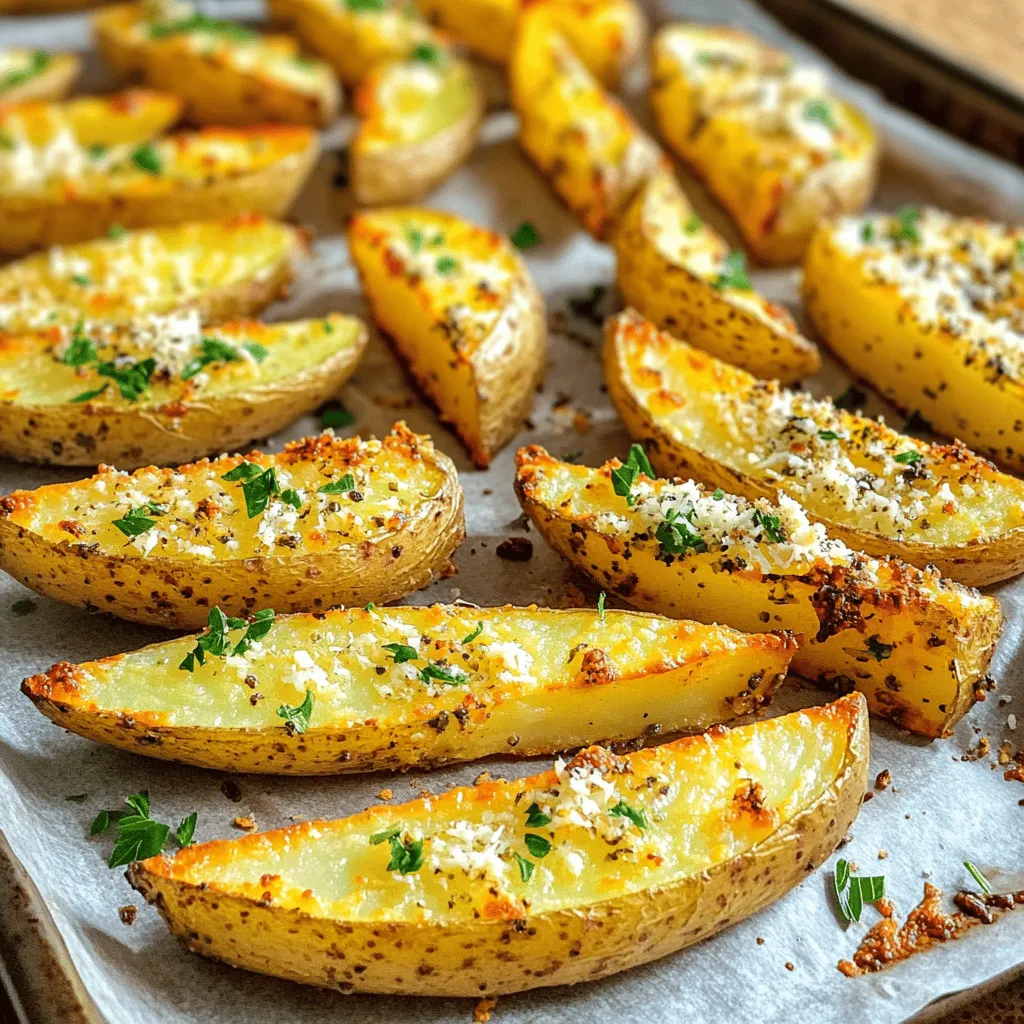
Variations
Different Flavor Profiles
You can play with flavors to make your garlic Parmesan potato wedges even better. One fun option is to make spicy garlic Parmesan potato wedges. Just add some cayenne pepper or chili flakes to the seasoning mix. This gives your dish a nice kick that spice lovers will enjoy.
Another idea is to create herb-infused variations. You can try adding fresh herbs like rosemary or thyme to the mix. These herbs add a lovely aroma and taste that pairs well with the garlic and cheese.
Alternative Cooking Methods
If you want a quicker way to cook, try the air fryer. Air frying gives you that crispy outside without using a lot of oil. Just coat the wedges as usual, then place them in the air fryer basket. Cook them at 400°F for about 20 minutes, shaking halfway through.
Grilling is another fun option. It adds a smoky flavor that is hard to resist. Just marinate the wedges in the garlic mix, then place them on the grill. Cook until they are tender and have nice grill marks.
Dietary Substitutions
If you need vegan alternatives, you can swap the Parmesan cheese for a dairy-free option. Nutritional yeast is a great choice. It has a cheesy flavor and packs in some nutrients. You can also use coconut oil instead of olive oil for a vegan-friendly fat.
For gluten-free variations, you don’t need to change much. All the ingredients are naturally gluten-free! Just make sure to check the labels on any pre-made spices you use to ensure they don’t contain gluten.
Storage Info
Storing Leftovers
To keep your garlic parmesan potato wedges fresh, store them in the fridge. Place them in an airtight container. This method helps prevent sogginess. They will stay good for about 3-4 days. If you want to keep them longer, consider freezing.
Reheating Instructions
For the best crispiness, reheat in the oven. Preheat your oven to 375°F (190°C). Spread the wedges on a baking sheet. Bake for about 10-15 minutes. Flip them halfway for even heating.
If you need a quicker option, you can use the microwave. However, be aware that this method may make them softer. Place the wedges on a microwave-safe plate and heat in short bursts of 30 seconds. This ensures they don’t get too hot.
Freezing Guidelines
Yes, you can freeze garlic parmesan potato wedges! To do this, let them cool completely first. Then, place them in a single layer on a baking sheet. Freeze until solid, then transfer to a freezer bag. This helps prevent them from sticking together.
To thaw, move them to the fridge overnight. You can also bake them straight from the freezer. Just add a few extra minutes to the bake time. This way, you can enjoy them later!
FAQs
How long do garlic parmesan potato wedges last?
Garlic parmesan potato wedges can last up to four days in the fridge. To store them, let them cool completely. Then, place them in an airtight container. Keep the container in the fridge to keep them fresh. For the best taste, eat them within two days.
Can I use sweet potatoes instead?
Yes, you can use sweet potatoes! They will give a different flavor and sweetness. Sweet potatoes add a nice twist to the dish. Just follow the same steps to cut and coat them. You may need to adjust the baking time since sweet potatoes can cook faster.
What dipping sauces pair well?
Some popular dipping sauces for garlic parmesan potato wedges include ranch, ketchup, and garlic aioli. Each sauce adds its own flavor. For a homemade garlic aioli, mix mayonnaise, minced garlic, and lemon juice. This adds a creamy and tangy touch.
For more ideas, try spicy mayo or BBQ sauce. These sauces can enhance the taste of your wedges and make them even more enjoyable!
This blog post covered how to make crispy garlic Parmesan potato wedges. We discussed the ingredients you need, like russet potatoes and olive oil. I shared step-by-step instructions for preparation and baking, ensuring flavor and texture.
You learned tips for the perfect crispiness and ideas for variations. Whether stored, reheated, or frozen, these wedges are a versatile snack.
Enjoy this tasty recipe, and don’t hesitate to experiment! Your guests will love it.
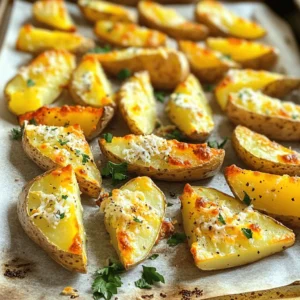

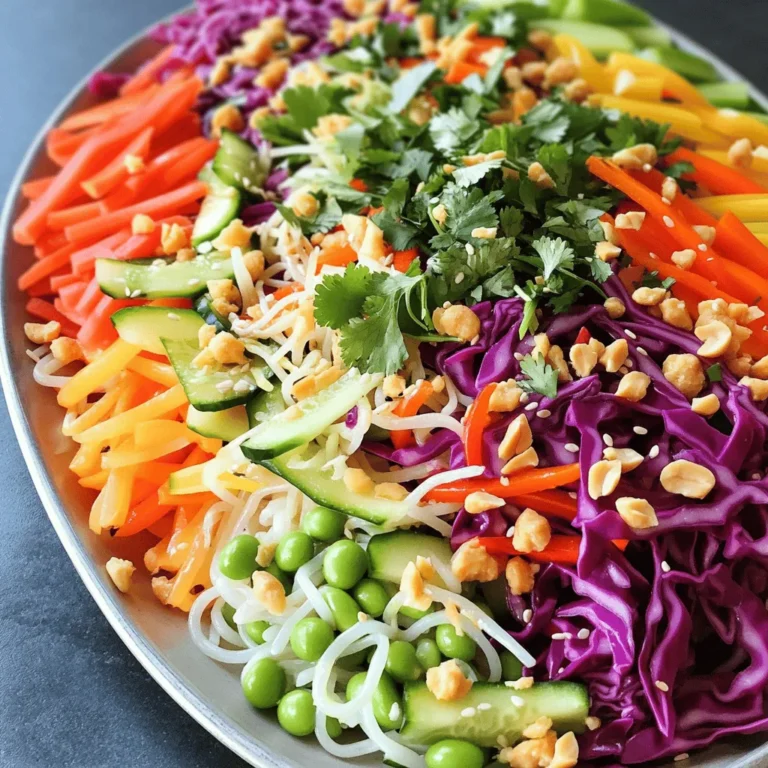
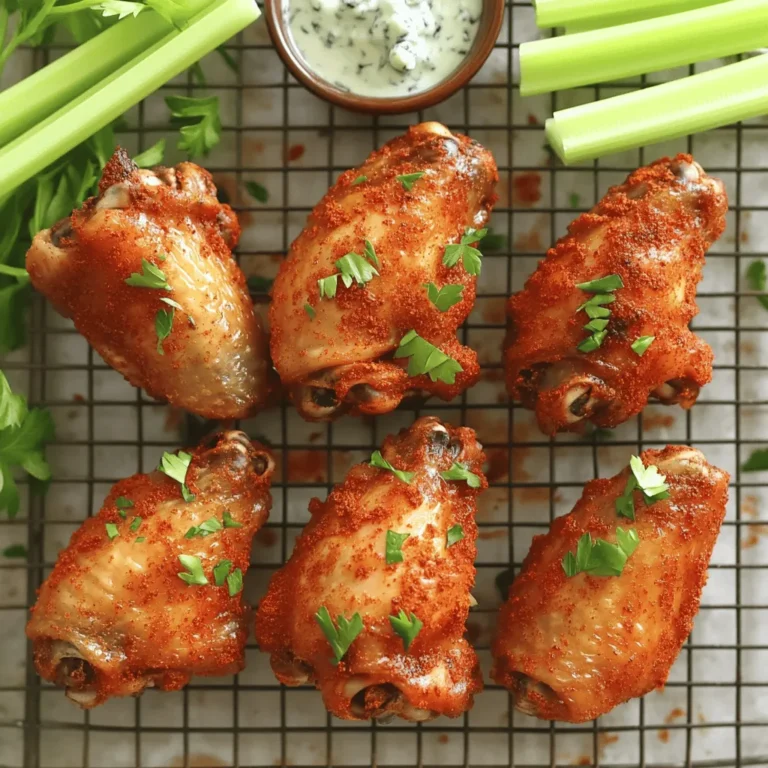
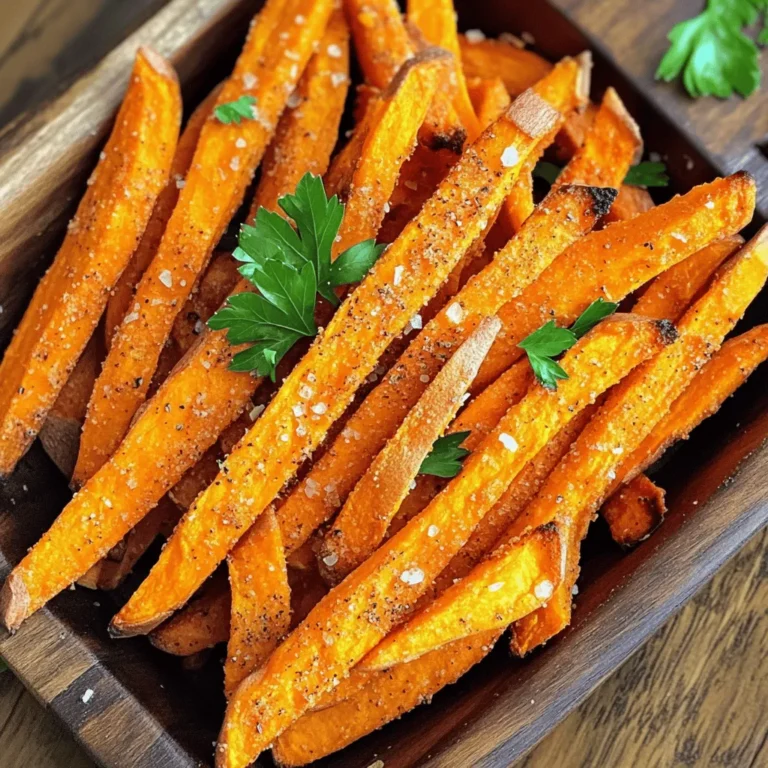
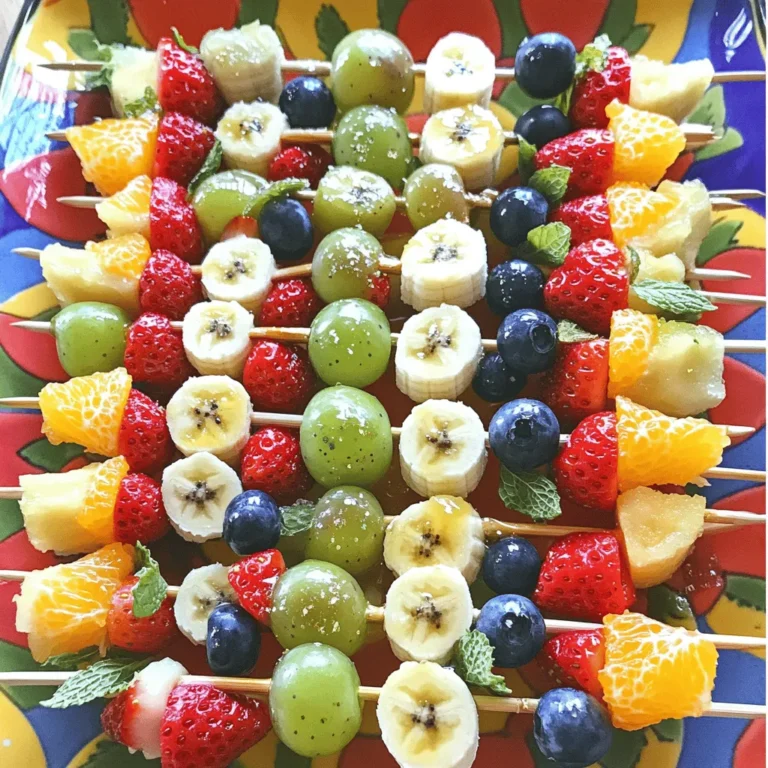
![- 1 lb boneless, skinless chicken breasts, cut into bite-sized pieces - 1 cup dill pickle juice - 1 cup all-purpose flour - 1 teaspoon onion powder - 1 teaspoon garlic powder - 1 teaspoon paprika - 1 teaspoon black pepper - 1/2 teaspoon salt - 2 large eggs, beaten - 1 cup breadcrumbs (use panko for added crunch) - 1/2 cup ranch dressing - Fresh dill, for garnish (optional) These ingredients create a tasty flavor mix. The chicken gets a nice tang from the dill pickle juice. The spices add warmth and depth. The ranch dressing gives a creamy finish. You will need some basic tools for the best results. Here’s what I suggest: - Mixing bowls for marinating and breading - A whisk for beating the eggs - A baking sheet lined with parchment paper or greased - Measuring cups and spoons for accuracy These tools help streamline your cooking process. They ensure that each step flows smoothly and efficiently. If you want to change things up, here are some easy swaps: - Use chicken thighs instead of breasts for more flavor. - Swap out ranch dressing for blue cheese dressing for a bolder taste. - Try gluten-free flour if you need a gluten-free option. - Use crushed cornflakes instead of breadcrumbs for extra crunch. These substitutions can make the recipe your own. You can keep it fun and exciting while still enjoying the core flavors. For the complete recipe, check the [Full Recipe]. To start, grab a mixing bowl. Place the bite-sized chicken pieces into it. Pour in the dill pickle juice, making sure the chicken is fully submerged. Cover the bowl with plastic wrap or a lid. Now, let it chill in the fridge. For best results, marinate for at least one hour. If you have time, overnight is even better. This step adds so much flavor to the chicken! Next, let’s set up a breading station. You will need three bowls. In the first bowl, mix the all-purpose flour with onion powder, garlic powder, paprika, black pepper, and salt. Stir well until everything is combined. In the second bowl, pour in the beaten eggs. Whisk them until they are smooth. In the third bowl, fill it with breadcrumbs, preferably panko. Panko gives a nice crunch to the bites. After marinating, take the chicken out of the fridge. Gently pat the chicken pieces dry with paper towels. Start by dredging each piece in the flour mix. Make sure to shake off any extra flour. Next, dip the chicken into the beaten eggs. Finally, coat the chicken well with the breadcrumbs. Now, preheat your oven to 400°F (200°C). Prepare a baking sheet by lining it with parchment paper or greasing it lightly. Arrange the breaded chicken bites in a single layer. Bake for 15-20 minutes. They should turn golden brown and crispy. Check that the internal temperature reaches 165°F (75°C). Once cooked, move the chicken bites to a serving platter. Drizzle ranch dressing on top and sprinkle with fresh dill if you like. This adds a lovely touch! For the full recipe, be sure to check the details. To get crispy chicken bites, follow a few key steps. First, make sure to marinate the chicken in dill pickle juice. This adds flavor and helps keep the meat moist. Next, dry the chicken pieces well before breading. Excess moisture can lead to soggy bites. When coating, use seasoned flour first, then dip in egg, and finally cover with breadcrumbs. I recommend using panko breadcrumbs for extra crunch. Bake at 400°F (200°C) until golden brown and fully cooked. Avoid common mistakes for the best results. Do not rush the marination process; it is crucial for flavor. Skipping the drying step can lead to less crispy bites. Also, ensure you do not overcrowd the baking sheet. Leave space between each piece to allow hot air to circulate. Lastly, check the internal temperature. Chicken should reach 165°F (75°C) to be safely eaten. For tailgating or parties, serve these bites with extra ranch dressing for dipping. This adds a nice creamy touch. You can also pair them with fresh pickle slices for added crunch. For a fun twist, consider setting up a dipping station. Include various sauces, like buffalo sauce or honey mustard. This lets guests customize their bites. {{image_4}} Want some heat? Add hot sauce to the marinade. This gives your chicken bites a spicy kick. You can also mix cayenne pepper into the flour. Adjust the amount to your taste. This adds flavor without overwhelming the pickle taste. If you enjoy heat, this variation is for you! Looking for a lighter option? Use an air fryer to cook your chicken bites. This method cuts down on oil and keeps them crisp. Preheat your air fryer to 400°F (200°C). Place the breaded chicken in a single layer. Cook for about 12-15 minutes. Check that they reach an internal temperature of 165°F (75°C). You get a crunchy texture without deep frying! Want a veggie twist? Try using cauliflower instead of chicken. Cut cauliflower into bite-sized florets. Marinate them in the dill pickle juice for the same time. Follow the same breading and cooking steps. Bake or air fry until golden and crispy. This gives you a tasty, plant-based snack that everyone will love. You can find the full recipe for Pickle Ranch Chicken Bites and try these fun variations! To keep your leftover chicken bites fresh, place them in an airtight container. Make sure they cool down to room temperature before sealing. This method helps prevent moisture, which can make them soggy. Store the container in the fridge for up to three days. When you're ready to enjoy your chicken bites again, reheating properly is key. I recommend using an oven or an air fryer for the best results. Preheat the oven to 375°F (190°C). Place the chicken bites on a baking sheet and heat for about 10-15 minutes. This method helps restore their crispy texture. If using an air fryer, set it to 350°F (175°C) and heat for about 5-7 minutes. If you want to save some chicken bites for later, freezing is a great option. First, let them cool completely. Then, arrange the bites in a single layer on a baking sheet and freeze for about an hour. Once frozen, transfer them to a freezer-safe bag or container. They can last up to three months in the freezer. When you're ready to eat, just reheat them from frozen, following the tips above for that perfect crunch. For the full recipe, check out the details above. The best way to marinate chicken is to use a flavorful liquid. For Pickle Ranch Chicken Bites, you will soak the chicken in dill pickle juice. This juice adds a zesty kick and keeps the meat juicy. Place the cut chicken in a bowl and cover it with the pickle juice. Make sure all pieces are fully submerged. Cover the bowl and refrigerate for at least an hour. For even better flavor, let it marinate overnight. This method works well for any chicken dish. Yes, you can use frozen chicken for this recipe. However, it is best to thaw the chicken first. Place it in the fridge overnight or submerge it in cold water for quicker thawing. Once thawed, cut the chicken into bite-sized pieces. After that, follow the marination steps as usual. Using frozen chicken may change the texture slightly, but it will still taste great. To make a low-carb version of Pickle Ranch Chicken Bites, you can skip the breadcrumbs. Instead, coat the chicken pieces in crushed pork rinds or almond flour. Both options give a nice crunch without the carbs. You can also use a low-carb ranch dressing for dipping. This way, you keep the flavor and texture while making it suitable for a low-carb diet. Enjoy your tasty bites without the guilt! In this post, we explored how to make Pickle Ranch Chicken Bites. We discussed key ingredients, cooking essentials, and helpful substitutions. I shared step-by-step instructions for marinating, breading, and baking. You learned tips for crispy bites and common mistakes to avoid. We covered variations like spicy bites and vegetarian options. Finally, I provided storage tips and answered FAQs. Try these bites for your next gathering. They’re fun, easy, and full of flavor! Enjoy your cooking adventure!](https://dishtreats.com/wp-content/uploads/2025/07/7f7f749c-ecc1-4920-b674-4460a511463b-768x768.webp)
![To make delicious grilled veggie kabobs, gather these fresh ingredients: - 1 bell pepper (any color), cut into 1-inch pieces - 1 zucchini, sliced into rounds - 1 yellow squash, sliced into rounds - 1 red onion, cut into wedges - 8 cherry tomatoes - 1 cup mushrooms, cleaned and stems removed - 3 tablespoons olive oil - 2 cloves garlic, finely minced - 1 teaspoon smoked paprika - 1 teaspoon dried oregano - Salt and freshly ground black pepper to taste - 8 skewers (wooden or metal) Fresh vegetables make a big difference in flavor. You can swap in seasonal veggies, like asparagus or eggplant, based on what you find at the market. This keeps your kabobs fresh and exciting. If you have frozen vegetables, use those too! Just remember to thaw and drain them well. Fresh veggies often taste better but frozen can be a great backup. Using fresh ingredients ensures better taste and texture. Fresh veggies hold their shape and crunch better on the grill. When you bite into a grilled kabob, you want that satisfying crunch. Plus, fresh produce packs more nutrients and flavor. So, always try to choose fresh when you can! For the full recipe, check the section above. Cutting vegetables evenly ensures they cook at the same rate. Aim for 1-inch pieces for bell peppers and wedges for onions. Slice zucchini and yellow squash into rounds. If using wooden skewers, soak them in water for at least 30 minutes. This step prevents burning and keeps them strong. Marinating vegetables adds rich flavor. Combine olive oil, minced garlic, smoked paprika, and oregano. Toss in salt and pepper, then mix well. Add your veggies and coat them with the marinade. Let them sit for 15 minutes to soak up the flavors. Preheat your grill to medium-high heat. A hot grill helps create nice grill marks and a good sear. Place the kabobs on the grill grates. Arrange them evenly for better cooking. Cook for about 10-15 minutes. Turn them occasionally to ensure even cooking. Look for tender veggies with nice grill marks. To serve kabobs, use a rustic platter for a warm touch. Garnish with fresh herbs for added color. Serve with tzatziki or yogurt dip for a creamy contrast. Pair with a light salad or grilled protein for a complete meal. Enjoy your delicious creation! For the full recipe, check out the Grilled Veggie Kabobs details above. To boost the taste of your grilled veggie kabobs, try different marinades. Balsamic vinegar adds a sweet tang. Citrus juices like lemon or lime give a bright kick. You can also add spices or herbs. Consider rosemary, thyme, or cayenne pepper for extra flavor. Smoking the veggies adds depth too. If you have a grill with a smoker box, use it. Wood chips like hickory or mesquite can make a big difference. When you assemble your kabobs, think about color and texture. Alternate your veggies for a pretty look. Start with a bell pepper, then add a mushroom, followed by a cherry tomato. This keeps the kabob interesting. To prevent veggies from falling apart, push them snugly together on the skewer. Avoid overloading them; a little space helps. You can also add proteins like chicken or shrimp, or even cheese cubes for variety. This makes your kabobs more filling and tasty. For a twist, try marinating the protein in the same mix as the veggies. If you want to dive deeper into the recipe, check out the Full Recipe for more details! {{image_4}} You can easily customize grilled veggie kabobs by using seasonal vegetables. Here are some ideas: - Summer: Try corn on the cob, eggplant, and asparagus. - Fall: Use butternut squash, Brussels sprouts, and sweet potatoes. - Winter: Consider root veggies like carrots, turnips, and beets. You can also grill fruits alongside your veggies. Fruits add sweetness and a nice contrast. Pineapple, peaches, and bell peppers work well. Skewer them together for fun color and taste. For a great look and texture, combine different colors and shapes. Mix round cherry tomatoes with long zucchini slices. Use bright peppers with earthy mushrooms. This creates visual interest on your plate. You can make grilled veggie kabobs vegan by omitting any animal products. The recipe is already plant-based, so it’s a perfect choice. If you want a gluten-free version, ensure your marinade is gluten-free. Most spices and oils are safe, but check labels. You can enhance nutrition by adding grains or legumes. Try adding cooked quinoa or chickpeas to your kabobs. This gives extra protein and fiber. If you follow a low-carb diet, focus on non-starchy vegetables. Zucchini, bell peppers, and mushrooms are great picks. You can skip the starchy veggies like corn or potatoes. Check out the Full Recipe for more ideas on how to adapt these kabobs! To keep your leftover kabobs fresh, store them in the fridge. Place them in an airtight container. They can last up to three days. For longer storage, freeze them. Wrap each kabob in plastic wrap, then place them in a freezer bag. They can stay frozen for up to three months. When reheating kabobs, use the oven or grill. Preheat the oven to 350°F. Place the kabobs on a baking sheet. Heat them for about 10 minutes. This method keeps the veggies tender. You can also grill them for 5 minutes on medium heat. Avoid microwaving, as it makes them soggy. The freshness of your ingredients matters. Bell peppers and zucchini last well in the fridge for about a week. Tomatoes and mushrooms are best if used within three days. Always check for signs of spoilage before using leftovers. You can prep veggies ahead of time for easy grilling. Cut your bell pepper, zucchini, and onion in advance. Store them in the fridge in sealed bags. This saves time when you're ready to grill. Kabobs are great for meal plans. You can mix and match different veggies throughout the week. Pair them with grains or salads for a full meal. They also work well for lunch boxes. Just make sure to keep them cool until you eat. If you have a gathering, kabobs are a hit! You can set up a kabob station. Guests can choose their favorite veggies. This adds fun and personalization to your meal. Kabobs not only taste great but also look colorful and inviting on the table. For the complete recipe, check out the [Full Recipe]. Can I make these kabobs in the oven? Yes, you can! Set your oven to 400°F. Place the kabobs on a baking sheet. Bake for about 20 minutes, turning halfway through. This gives you a tasty option when grilling isn't possible. What are the best vegetables for grilling? The best vegetables for grilling include: - Bell peppers - Zucchini - Yellow squash - Red onion - Cherry tomatoes - Mushrooms These veggies hold up well on the grill and taste great! How to know when the vegetables are done cooking? Look for nice grill marks and tenderness. You can pierce them with a fork. If they are soft but still firm, they are ready to eat. How to make grilled veggie kabobs more flavorful? Use a good marinade with olive oil, garlic, and spices. Let the veggies soak in the marinade for at least 15 minutes. This step really boosts their taste. Why should you marinate vegetables? Marinating adds flavor and helps keep them juicy. The oil and spices soak into the veggies, making each bite delicious. What type of skewers work best for grilling? Both wooden and metal skewers work well. If using wooden skewers, soak them first. This prevents burning. Metal skewers can be reused and do not need soaking. Can I use tofu or tempeh in veggie kabobs? Yes, tofu or tempeh can add protein. Cut them into cubes and marinate like the veggies. They grill nicely and taste great with the other flavors. How do I prevent vegetables from burning on the grill? Start with a clean grill and preheat it. Keep an eye on the kabobs while grilling. Turn them often to ensure even cooking and avoid burning. What can I serve alongside grilled veggie kabobs? Serve kabobs with dips like tzatziki or hummus. They also pair well with rice, quinoa, or a fresh salad. Adding some bread can complete the meal nicely. You now have all the tools to create delicious grilled veggie kabobs. We covered essential ingredients, preparation methods, grilling tips, and serving ideas. Remember, fresh ingredients make a big difference. You can also customize with various vegetables and flavors. Don’t forget to store leftovers properly for future meals. Enjoy your grilling adventure, and get creative with your kabob variations. With practice, you'll master this fun cooking method that delights everyone!](https://dishtreats.com/wp-content/uploads/2025/06/56cc5cbd-3bee-4e7d-a92f-dff27107e6fe-768x768.webp)